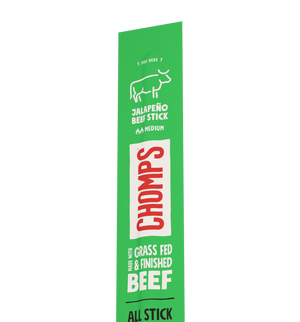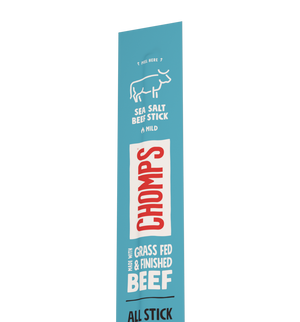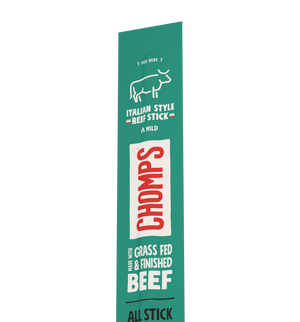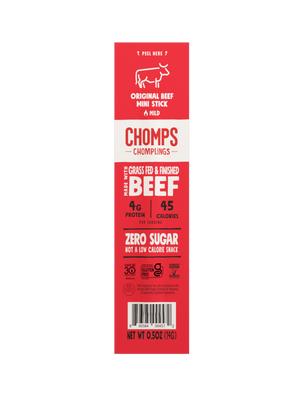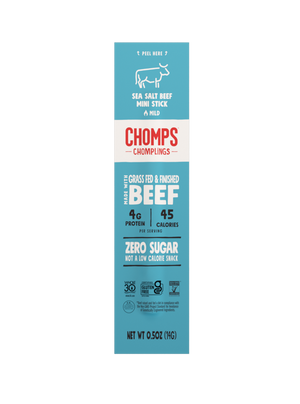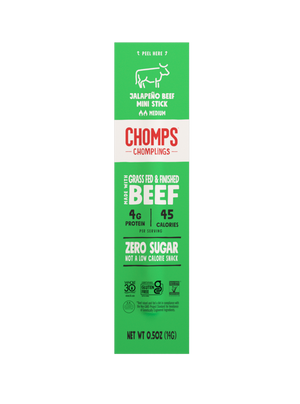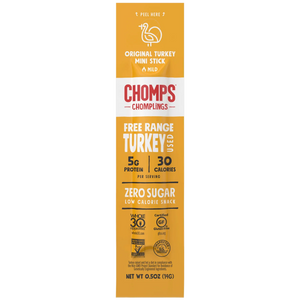The nutrition protocol of the AIP is essentially an elimination diet followed by a reintroduction phase where foods are reintroduced systematically to determine which, if any, foods are triggers and may need to be eliminated permanently.
The AIP is not going to look the same for everyone, and the goal of the reintroduction phase is to find a personalized way of eating that helps those with autoimmune disease live their best life!
AIP reintroduction schedule: When is the right time to reintroduce foods?
There is no set AIP reintroduction schedule. Rather, the AIP is a template to use when adopting an individualized approach to living well with autoimmune disease.
While there are no set timelines for when to reintroduce foods on AIP, there are general guidelines that can help you to determine when the time is right for you to start the reintroduction process.
In a perfect world, you’d ideally want to wait until you feel substantial or total relief from your autoimmune symptoms before you reintroduce any foods. With that said, if you are already seeing some improvements in your health and feel ready to reintroduce some foods, you can start to try some reintroductions after 30 days of the elimination phase. Just a word of caution to try not to let cravings determine your reintroduction choices.
If you are not seeing improvements on the AIP elimination phase after 90 days or 3 months, it is usually time to work on troubleshooting or digging deeper. Working with a functional medical doctor or a nutritional therapy practitioner with AIP experience to help you personalize the AIP as well as troubleshoot can be incredibly helpful.
Remember to keep in mind the importance of bio-individuality, meaning what works best for one person will look different than what works best for another person. One person may start their reintroduction phase after just 30 days on the AIP elimination phase, while another person may need to wait longer.
How to reintroduce foods on AIP
After the elimination phase, it can be tempting to reintroduce foods all at once. However, it is important to reintroduce foods one at a time, systematically, in order to identify potential trigger foods.
Here are some guidelines to follow when reintroducing foods on the AIP:
- Pick which food you plan to reintroduce. You will eat the chosen food up to three times, then avoid it for five days.
- The first time you eat the food, only eat half a teaspoon. Wait for fifteen minutes to see if you experience any symptoms.
- If you notice any symptoms, do not eat the food again. If you do not notice any symptoms, eat one more teaspoon and wait another 15 minutes.
- If you notice any symptoms within the 15 minutes, do not eat the food again for now. If you do not notice any symptoms, eat a bigger bite of the food (about one and a half teaspoons), then wait two to three hours and watch for symptoms.
- If you notice any symptoms within two to three hours, do not eat the food again for now. If you do not notice any symptoms, eat a normal-sized portion of the food. Do not eat that food again for five days.
- Be on the lookout for any symptoms during the five days.
- Do not reintroduce any other foods during the five days.
- If you have no symptoms at all during the five days, the reintroduction is successful! You can go ahead and reincorporate this food into your diet!
- Note: just because a food fails the reintroduction process at this point does not mean you will not be able to reintroduce the food in the future (exceptions include foods that you are allergic to). You can continue to work on your healing journey, other reintroductions, and return to any previously failed reintroductions in the future.
AIP reintroduction stages
While you can decide which order to reintroduce foods, there are four recommended stages of reintroduction.
The foods in the first stage are foods that are least likely to cause a reaction, while the foods in the fourth stage are foods that are most likely to cause a reaction.
Stage 1 AIP Reintroduction List
- egg yolks
- fruit-, berry- and seed-based spices
- seed and nut oils
- ghee (from grass-fed dairy)
- occasional coffee
- cocoa or chocolate
- peas and legumes with edible pods (green beans, scarlet runner beans, sugar snap peas, snow peas, etc)
- legume sprouts
Stage 2 AIP Reintroduction List
- seeds
- nuts
- chia seeds
- coffee on a daily basis
- egg whites
- grass-fed butter
- alcohol in small quantities
Stage 3 AIP Reintroduction List
- eggplant
- sweet peppers
- paprika
- peeled potatoes
- grass-fed dairy
- lentils, split peas, and garbanzo beans (aka chickpeas)
Stage 4 AIP Reintroduction List
- chili peppers and nightshade spices
- tomatoes
- unpeeled potatoes
- alcohol in larger quantities
- gluten-free grains and pseudograins
- traditionally prepared or fermented legumes
- white rice
Symptoms to watch for in the AIP reintroduction phase
Symptoms of a reaction aren’t always obvious, so keep an eye out for any the following:
Changes in energy levels
- Reduced energy
- Fatigue
- Afternoon energy dips
- Extra energy in the evening that interferes with sleep
Cravings
- Sugar
- Fat
- Salt
- Caffeine
- Minerals from nonfood items (clay, chalk, dirt, sand)
Disrupted sleep
- Struggling to fall asleep
- Waking during the night
- Feeling unrested in the morning
Gastrointestinal symptoms
- Stomachache
- Heartburn
- Nausea
- Gas
- Bloating
- Undigested food particles in stool
- Constipation
- Diarrhea
- Change in frequency of bowel movements
Headaches
- Mild
- Migraine
Increase in mucus production
- Phlegm
- Runny nose
- Postnasal drip
Mood issues
- Mood swings
- Feeling low or depressed
- Anxiety or feeling anxious
- Low tolerance for stress
Pain
- Muscle
- Joint
- Ligament
- Tendon
Skin changes
- Acne
- Rashes
- Dry skin
- Dry hair
- Dry nails
- Little pink bumps or spots
Other
- Cough or feeling an increase in the need to clear your throat
- Itchy eye or mouth
- Lightheadedness or dizziness
- Return or worsening of any symptoms
- Sneezing
Tracking AIP reintroductions
Organizing and tracking AIP reintroductions, as well as keeping a food and symptom journal, can be incredibly beneficial when navigating the AIP reintroduction phase.
Quick tips for tracking reintroductions:
- Schedule your AIP reintroductions. Choose which foods you’d like to reintroduce this month, and calendar them in your schedule. Remember to allow at least 5 days between reintroductions. You may want to avoid scheduling new reintroductions during particularly stressful times, the days before and/or during your cycle, and during travel.
- Keep a food and symptom journal. You can use an app on your phone like Cronometer to track your food and take note of any corresponding symptoms, or you can use a handwritten journal. Record all of your food (or at the very least your reintroductions), your hydration / anything you drink, your sleep and stress levels, your movement, as well as any symptoms that you experience. Then, if and when symptoms pop up, you can look at your journal to determine if you think the symptoms were caused by the reintroduced food, an increase in stress, poor sleep, overexertion, or a combination of all of the above.
AIP Reintroduction Stage FAQs:
What is the anti inflammatory reintroduction diet?
The anti inflammatory reintroduction diet is the second phase of the autoimmune protocol (AIP), designed specifically to help individuals add foods back into their diet after completing the elimination phase. It serves as a personalized roadmap for determining which foods support your healing journey and which may trigger inflammatory responses or autoimmune symptoms.
Unlike other elimination diets, the anti inflammatory reintroduction diet follows a structured, methodical approach that prioritizes your body's healing process. The process involves introducing one food at a time, monitoring for reactions over several days, then moving to the next food on your AIP reintroduction list.
The anti inflammatory reintroduction diet recognizes that each person's immune system responds differently to various foods. What triggers inflammation in one person may be perfectly tolerated by another. This individualized approach ensures that your long-term eating plan supports optimal health while providing maximum dietary variety and nutritional density.
What should I reintroduce first on the AIP diet?
When beginning AIP reintroduction, it's essential to start with Stage 1 foods that are least likely to cause reactions. The first foods on your AIP reintroduction list should include egg yolks, which are nutrient-dense and generally well-tolerated. Fruit, berry, and seed-based spices are another excellent starting point, as they can add flavor variety to your meals while being relatively gentle on the digestive system.
Ghee from grass-fed sources is often successfully reintroduced early in the process, providing healthy fats and fat-soluble vitamins. Many people also find success with seed and nut oils during initial AIP reintroduction. These foods form the foundation of your expanded eating plan and can significantly improve the palatability of your meals.
For those seeking protein during AIP reintroduction, AIP snacks like Chomps Beef Sticks can be valuable additions. Flavors like our Original Beef and Smoky BBQ Beef provide 10g protein per stick with 0g sugar. As you progress through the AIP reintroduction phases, you'll gradually expand your food choices while maintaining the therapeutic benefits of your elimination phase healing.
How long does AIP reintroduction take?
The duration of AIP reintroduction varies significantly from person to person. Most people spend several months to over a year working to complete AIP reintroduction, though some may take longer depending on their specific health needs and goals.
Each individual food reintroduction requires a minimum of seven days: one day for the actual food testing and six days of observation for delayed reactions. When you multiply this timeline across all the foods in the various AIP reintroduction phases, you can see how the process naturally extends over many months. However, this extended timeline allows your body adequate time to heal between tests and provides clear feedback about each food's impact on your health.
The AIP reintroduction phases are designed to be flexible. Some individuals choose to reintroduce only specific foods from their AIP reintroduction list that they miss most, while others systematically work through all four stages. Your personal goals, lifestyle, and healing progress will determine how long your AIP reintroduction takes.
What foods to reintroduce after an AIP diet?
The foods to reintroduce after completing the AIP elimination phase are organized into four distinct phases, each containing progressively more challenging foods. Your AIP reintroduction list should include Stage 1 foods such as egg yolks, ghee, seed oils, occasional coffee, cocoa, and certain legumes like green beans and sugar snap peas. These foods are typically well-tolerated and provide essential nutrients that enhance your dietary variety.
Stage 2 of your AIP reintroduction phases introduces nuts, seeds, chia seeds, egg whites, grass-fed butter, and small amounts of alcohol. Many people find success with convenient protein options during this phase, and Chomps can provide an excellent source of thoughtfully-sourced protein that fits within your reintroduction goals.
The AIP reintroduction list for Stage 3 includes nightshades like sweet peppers and peeled potatoes, grass-fed dairy products, and legumes such as lentils and chickpeas. The final phase of AIP reintroduction introduces the most potentially reactive foods including tomatoes, chili peppers, unpeeled potatoes, gluten-free grains, and larger quantities of alcohol.
Throughout your AIP reintroduction journey, focus on maintaining adequate protein intake with options that support your healing goals. When you're ready to expand your AIP reintroduction list, choose snacks that provide sustained energy without compromising your progress. Some people even successfully incorporate AIP desserts made with reintroduced ingredients like coconut products and natural sweeteners.
Remember that your AIP reintroduction list is completely customizable based on your individual needs, preferences, and reactions. You have full control over which foods to test, when to test them, and how quickly to progress through the AIP reintroduction phases. This personalized approach ensures that your final eating plan supports your long-term health and wellness goals while providing maximum enjoyment and nutritional value.
In closing
Keep in mind the goal of the AIP elimination phase is to help lower inflammation, reduce symptoms, improve gut health, balance hormones, and more.
The goal of the AIP reintroduction phase is to build on the elimination phase and help you find your personalized way of eating that helps you live your best life!
It can take time and patience, but it’s worth it!


